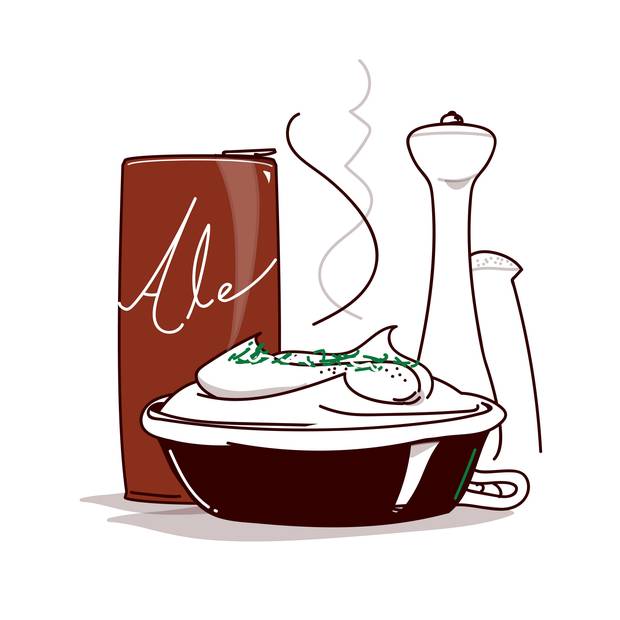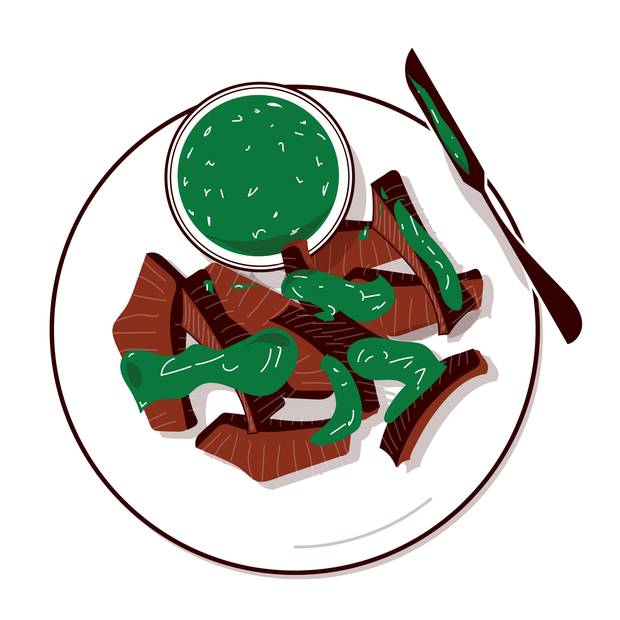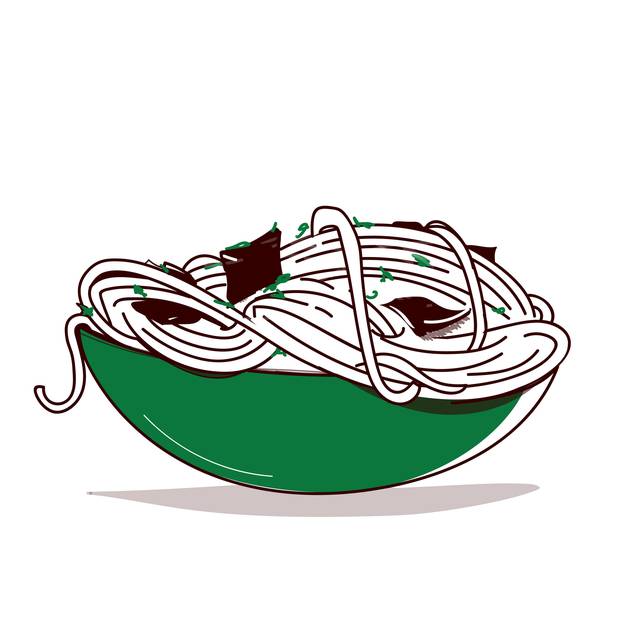The best pizza place in my neighbourhood, in my opinion, is run by a Vietnamese family. The children of the original Italian owners forgot how to make good pizza, so their Vietnamese employees bought the business from them and now make a killer pie. Is it no longer authentic because it's made by non-Italians? Let me guess, your answer is yes.
I'll go even further with my assumptions and posit that last year, when The New York Times ran a recipe for guacamole with peas in it, you threw a tantrum matched only when the female Ghostbusters ruined your childhood. Well, let me destroy a few more fond memories: I don't care about the guac epiphany you had at a Oaxacan hole in the wall six years ago. The faux-woke posturing of defending a food's "authenticity" is usually less about protecting a dish or cuisine from cultural erosion than the need to declare, "I know how it's supposed to taste because I once took an airplane to that country."

'We always mention that it's lamb as opposed to beef.' Read more…
Since then, you've been paying the extra $1.50 to add it to your nachos at the pub. Your argumentative certainty over guacamole is because you've gotten used to the way you expect it to taste. Well, guess what: Nachos are a Tex-Mex dish, created in Mexico in 1943 by Ignacio Anaya, for Americans, using American cheese. They wouldn't exist without different nationalities influencing each other's foods, dumbing them up or, ultimately, down – such as in 1976, when Frank Libretto concocted a version of the melted cheese that could be pumped onto chips at Arlington Stadium in Texas, creating the ballpark version of a Mexican-influenced snack created in the United States.
If you really want to respect "authenticity," then you should drop nachos from your diet entirely. Same goes for the egg custard tarts at dim sum, a Chinese riff on pastel de nata that was invented when Portugal rented Macau as a trading port. Instead, get used to eating slugs from the ground, which is what everyone's ancestors did before anyone appropriated anyone else's cooking ideas, such as the inauthentic method of using fire.
'If it's not grilled, it's not a Reuben.' Read more…
Yes, some people go through heroic efforts to maintain strict levels of "authenticity," of which pizza is a perfect example. According to the True Neapolitan Pizza Association (based in Italy, of course), there are only 14 places in Canada that make "true Neapolitan pizza," including margheritas with precisely 80 to 100 grams of cheese and four to five grams of olive oil (with a 20-per-cent variance tolerated).
If you're eating from my favourite Vietnamese-owned spot, or any of the other 1,000 Toronto joints slinging delicious but inauthentic pizza (sometimes served with honey mustard or sweet Thai chili sauce to choke it down), the True Neapolitan Pizza Association feels you're basically eating garbage. Another thimbleful of tomato sauce and you might as well be burning the Italian flag in front of the consulate.

'If liqueurs or sake or – gasp – vodka enters the equation, we are no longer talking about a martini.' Read more…
Is that really where you want to go?
Most importantly, and specificity being the soul of narrative, the phrase "authentic" means nothing. It's an empty adjective.
'The best reason now to eat with your hands is simple. Food tastes better that way.' Read more…
If I'm told that a Thai restaurant is cooking with pungent levels of fish sauce (using both the filtered kind and non-filtered mam nem paste) and stinging chili heat, yeah, I'm interested – that's something I like more than the oversweet versions that are more common in Canada, where flavours and spices are traditionally dialled down to appeal to the broadest possible audience.
There's definitely a case to be made for the protection of various cuisines from the influence of whiteness – that pervasive force that assimilates food by robbing it of its spicy or sour flavours in order to repackage a blander version to sell to a larger (see: white) audience.

'The burning question is this: Must chimichurri include oregano?' Read more…
But authenticity can also be a trap, one that refuses to allow so-called ethnic cuisines to evolve and grow like everything else. An Indian restaurateur recently told me how he'd cut butter and cream from his dishes to showcase the complex spicing. Meanwhile, he is still trying to innovate, fussing with plating and ingredients to graft new ideas onto old. So he's honouring the roots of his familial cuisine while keeping it relevant to modern palates. None of that is communicated with the hollow descriptor "authentic."
Whenever I'm interviewing an immigrant restaurateur, I end up asking variations of "but how would you make this back home?" And the answer is always a variation of "back home is a nice story. But I'm trying to make money." While I like spicy, fermented food, many people don't. Many would just as soon have pad Thai made with ketchup and vinegar than with tamarind and fish sauce. People like what they like and no court in the land can legislate taste.
'If you wander into a Roman café after noon, don't dare ask for a cappuccino.' Read more…
My neighbourhood now features the Pow Wow Cafe, where the chef/owner, who identifies as Anishinaabe and Jewish, serves an "Indian taco": It's jerk chicken (Caribbean, though if you want to go back further, African) on top of bannock (a First Nations fried bread that appeared when colonizers cut off indigenous peoples' ability to hunt for food, then sold them flour), topped with cheese and cilantro. These are as much tacos as my shoe is a phone. But honestly, all I care about is whether they taste good.
Let food be as high- or low-minded as it needs to be to find its audience. Every cuisine in the world is a mashup, influenced by shifts in indigenous ingredients, immigration, colonialism, trade routes, harvests and famine. If you go back to the old country, you'll find that no two people completely agree on how to make anything. And if you go far back enough in a dish's history, you'll find someone appropriating something (often through military conquest).

'Use one ingredient for another, it changes not only the flavour of a dish but also the history of it.' Read more…
So long as you're not ripping people off without giving them credit, the "authenticity" of food shouldn't matter as much as its taste. Food should taste good. And taste, not having gone to college, is still subjective.
Having said that, keep that sushi burrito away from me.